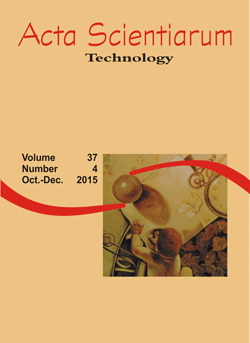<b>Comparison of resistance to corrosion on haz of a ferritic stainless steel by different surface finishings
DOI:
https://doi.org/10.4025/actascitechnol.v37i4.27588Keywords:
ferritic stainless steel P410D, surface finish by machining, surface finish by TIG Dressing, corrosion.Abstract
Certain techniques, comprising machining and GTAW dressing, have been used in the weld bead edge (region of the welded joint between the weld metal and the base metal) to increase the fillet radius of the region by reducing the stress concentrator factor, decreasing roughness, and increasing the life of weldings. Moreover, TIG Dressing may also provide a smooth change in the radius of the curvature and change the average grain size and promote a microstructural variation through the reflow of this region. Current study analyzes the effect of surface finish of the Heat Affected Zone (HAZ) on resistance to corrosion of welded joints of simple deposition under plate by using machining techniques with sandpaper of different particle sizes and GTAW Dressing, comparing the effect of the two techniques in the resistance to corrosion in environments with chloride ions. ACE P410D ferritic stainless steel was employed as base metal and austenitic wire 308L for welding. Results showed that the condition sweetened with GTAW Dressing with pure argon at current 100A generated the lowest mass loss among the conditions under analysis.
Â
Downloads
Downloads
Published
How to Cite
Issue
Section
License
DECLARATION OF ORIGINALITY AND COPYRIGHTS
I Declare that current article is original and has not been submitted for publication, in part or in whole, to any other national or international journal.
The copyrights belong exclusively to the authors. Published content is licensed under Creative Commons Attribution 4.0 (CC BY 4.0) guidelines, which allows sharing (copy and distribution of the material in any medium or format) and adaptation (remix, transform, and build upon the material) for any purpose, even commercially, under the terms of attribution.
Read this link for further information on how to use CC BY 4.0 properly.



















8.png)




